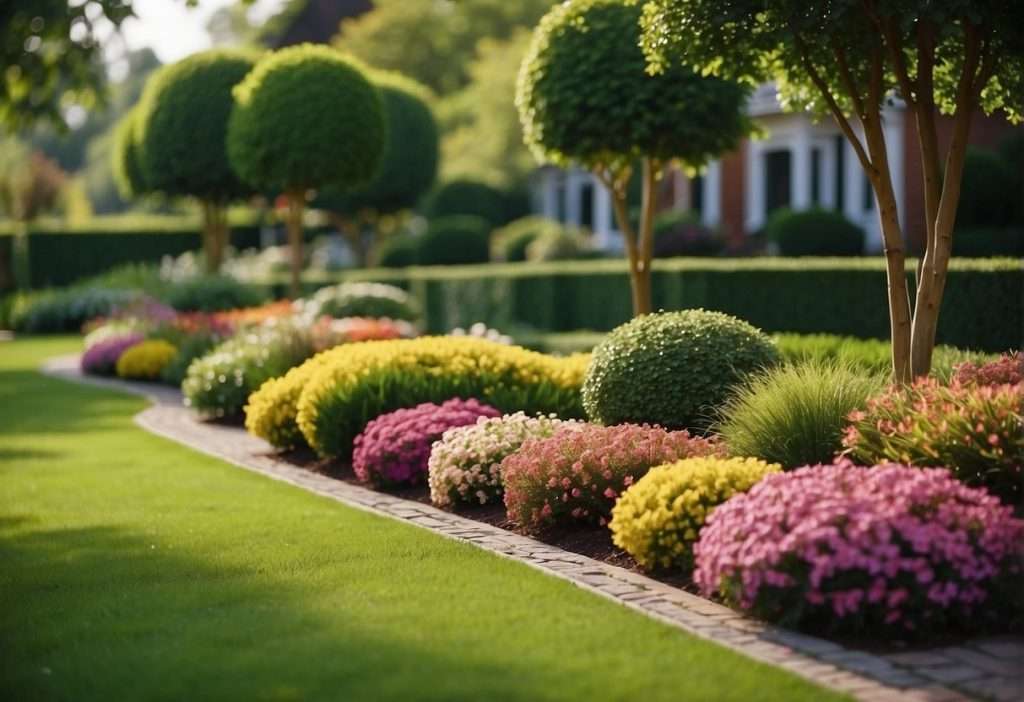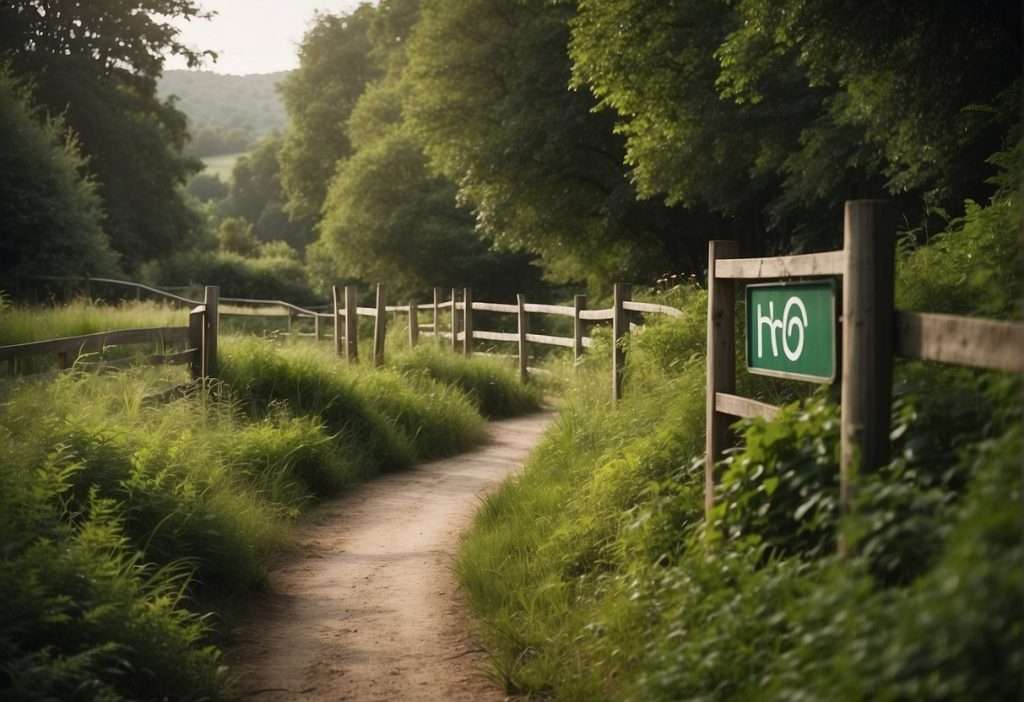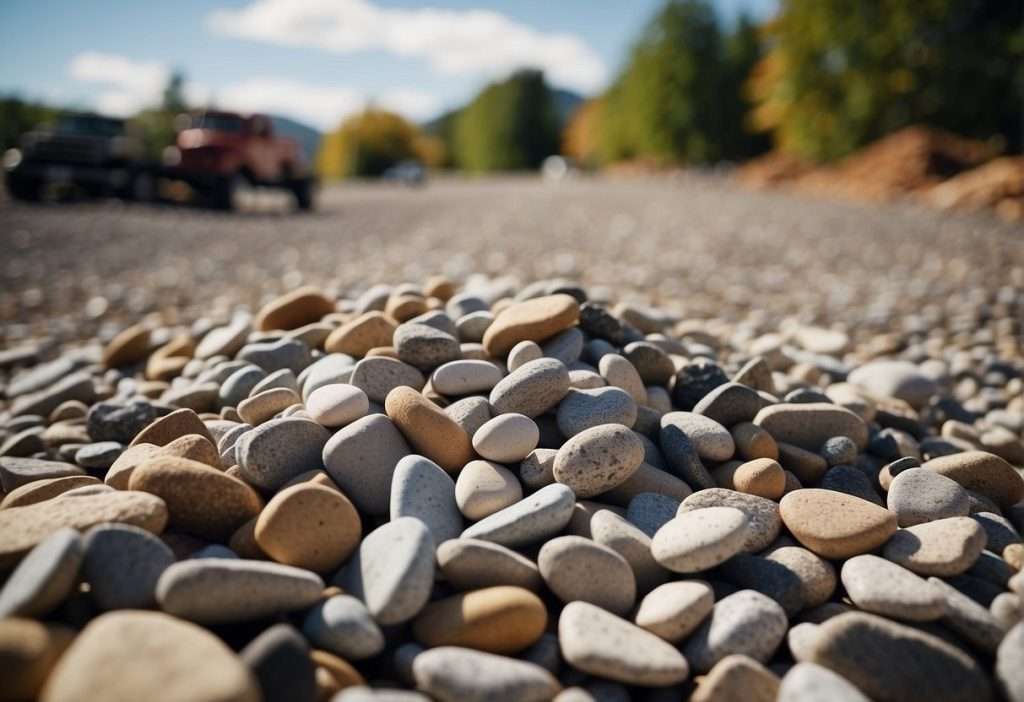Landscaping can significantly enhance the aesthetics of your home and augment the overall property value. When considering a makeover for your backyard or embarking on a new landscape design, it’s essential to understand the costs involved. Landscaping projects can vary widely in price based on size, complexity, and the types of materials and plants desired. Generally, you can expect basic services to start from a few hundred dollars, while more extensive redesigns and installations can reach into the tens of thousands.

The initial step to determining your landscaping costs is to assess the scope of your project. Smaller projects like adding flower beds or installing new sod could be comparatively cost-effective solutions for improving curb appeal. On the other hand, larger endeavors, such as constructing hardscapes or designing outdoor living spaces, will demand a higher budget.
Materials and labor are the primary cost drivers, but the value of landscaping extends beyond the immediate visual enhancement. Investing in quality landscape design can yield a high return in terms of property value, sometimes translating to a significant percentage increase in your home’s market price. Therefore, when budgeting for your project, consider the long-term benefits alongside the upfront cost to make the most informed decision.
Determining Factors of Landscaping Costs
The cost to landscape a yard varies widely depending on various factors, each contributing to the total price. Understanding these components will help you anticipate the investment needed for your landscaping project.
Yard Size and Condition
Yard Size: The overall square footage of your yard is a primary determinant of landscaping costs. Larger yards require more materials and labor, increasing the expense.
- Small yard (<1,000 sq ft): Lower material costs, fewer plants, less labor
- Large yard (>10,000 sq ft): Higher material costs, more plants, more labor
Condition: The current state of your yard affects costs—if your yard needs extensive prep work or clearing, costs will be higher.
- Well-maintained lawn: Minimal preparation, lower costs
- Overgrown with weeds: More cleanup required, higher initial costs
Types of Landscaping and Styles
Different types of landscaping and stylistic choices carry varied price tags:
- Softscaping: Includes plants, shrubs, trees, and lawn elements.
- Cost Influencers: Plant variety, maturity, quantity
- Hardscaping: Encompasses fencing, walkways, and water features.
- Cost Influencers: Materials used (stone, concrete), complexity
- Xeriscaping: Focuses on drought-resistant landscaping to reduce water usage.
- Cost Influencers: Specialized plants and irrigation systems
Each style, from English gardens to minimalist modern, will require different design elements and costs.
Complexity and Design Preferences
Design Services: Enlisting a professional landscaper, landscape designer, or landscape architect will affect your overall expenses.
- Design costs will vary based on the level of expertise and the complexity of your chosen landscape design.
Personal Preferences: Your specific design tastes will influence the cost—more elaborate garden designs can significantly increase the budget.
- Simple designs: Lower costs due to less complex layouts
- Custom designs: Higher costs for unique features and specialized labor
Labor costs are usually calculated by the hour, while material costs are a function of quality and quantity. When planning your backyard landscaping costs, keep these factors in mind to better manage your budget.
Landscaping Cost Breakdown
Understanding the costs involved in landscaping is essential before starting any project. It involves labor and professional fees, material and supply costs, and additional expenses for special features. The total cost can vary widely based on the size, complexity, and quality of materials used in your landscaping project.
Labor and Professional Fees
Professional landscapers typically charge an hourly rate ranging from $50 to $100. An average landscaping project could require 50-200 hours of labor, depending on complexity, resulting in a labor cost of $2,500 to $20,000.
Materials and Supplies
- Soil, Mulching, and Fertilization: Costs can range from $30 to $100 per cubic yard.
- Grass Seed and Sod: Sod costs on average $0.30 to $0.80 per square foot, while grass seed could be significantly less but requires more time and care.
- Plants: Individual plant prices vary dramatically depending on the species, ranging from $5 for basic perennials to $200+ for mature trees.
Additional Elements and Features
- Hardscaping: This includes elements like retaining walls and patios, with costs varying widely, starting from $15 to $40 per square foot.
- Structures: For features like a gazezbo, expect to invest $5,000 to $10,000 on average.
- Water Features: Installation of things like fountains can cost between $1,000 and $5,000, while more complex features such as ponds and waterfalls can increase the cost significantly.
Installation Expenses and Enhancements
The cost of landscaping installation varies significantly depending on the complexity and size of your project. Strategic planning and understanding the necessary expenses will help you budget effectively for your outdoor space transformations.
Sod and Turf Installation
When considering the installation of sod or turf in your backyard, it’s important to note that the average cost ranges from $0.30 to $0.80 per square foot for sod and between $5 to $20 per square foot for artificial turf. This pricing includes the materials and labor. Specifically, sod installation is a way to get an instant lawn, while opting for turf can save on long-term maintenance costs.
- Sod Installation Costs:
- Materials: $0.08 to $0.30 per square foot
- Labor: $0.22 to $0.50 per square foot
- Additional: Lawn seeding or hydroseeding may incur separate charges.
- Turf Installation Costs:
- Materials: $2 to $8 per square foot
- Labor: $3 to $12 per square foot
- Extras: Land grading can add to the overall cost if your outdoor space requires it.
Functional Landscaping Elements
Your outdoor space can greatly benefit from functional elements such as retaining walls, sprinkler systems, and drainage solutions. These features not only improve the usability and health of your yard but can also prevent future expenses due to erosion or water damage.
- Retaining Wall Installation:
- Materials: Natural stone, brick, or concrete blocks.
- Cost: $3,000-$8,000 on average, depending on size and materials.
- Sprinkler System Installation:
- Budget: Typically ranging from $1,500 to $3,500 for a complete system.
- Drainage Systems:
- Considerations: Tailored solutions may include French drains or sump pumps, with costs varying.
Decorative Features and Aesthetics
Adding decorative features such as a patio, deck, or flower beds can enhance the beauty of your space, while installations like ponds create focal points and add to the tranquility of a yard.
- Patio and Deck Installation:
- Patio Costs: $8-$50 per square foot, determined by material choice (concrete, pavers, stone).
- Deck Costs: Average of $35 per square foot but can be higher with luxury materials.
- Planting Flower Beds:
- Typical Cost: $650 to $3,000 based on design complexity and plant selection.
- Pond Installation:
- Expense: Starting around $5,000 and increasing with size and custom features.
Note: Landscape curbing, which defines and contains garden areas or flower beds, typically costs $5 to $13 per foot installed.
Carefully planning and integrating these enhancements into your landscaping projects can create a harmonious and functional outdoor living space. Investments in these elements not only bring joy but also add value to your property.
Maintenance and Ongoing Care

Proper maintenance is crucial for preserving the aesthetics and health of your landscaping. This section breaks down the ongoing costs and tasks that you should expect.
Routine Lawn Care
Lawn Mowing: Regular mowing keeps your lawn healthy and attractive. Expect to pay between $30 and $80 per visit, depending on your lawn size and the frequency of service.
Weed Control and Fertilization: To prevent weeds and ensure your grass has the nutrients it needs, budget around $50 to $200 for each application. The number of applications will vary based on your local climate and lawn needs.
Seasonal Upkeep and Services
Yard Cleanup: Seasonal cleanup services, which include leaf removal and garden bed maintenance, can cost between $200 and $500, depending on your yard’s size and the volume of debris.
Mulching: Applying mulch helps retain soil moisture and control weeds. Costs for mulching typically range from $100 to $300 per application, factoring in the type and quantity of mulch used.
Long-Term Landscaping Maintenance
Tree Trimming and Stump Grinding: For tree trimming, prices vary widely but usually start at around $200 and can climb much higher for large projects. Stump removal or grinding can run between $60 to $350 per stump, depending on size and location.
Lawn Aeration: Aeration helps your lawn breathe and absorb nutrients. This service, recommended annually, can cost from $75 to $200, depending on lawn size.
Remember, these costs can vary based on your location, the size of your lawn, and the specific services you require. Regular landscape maintenance services not only contribute to the beauty of your property but can also prevent more costly issues in the future.
Cost Variations by Geographic and External Factors
Landscaping costs are greatly influenced by your location and the specific conditions of your property. Variables such as regional pricing, the size and terrain of your property, and environmental concerns can significantly affect your final expenses.
Regional Pricing Differences
Different regions have varying landscaping costs per square foot due to labor rates, availability of materials, and the cost of living. For instance, the national average might be one point of reference, but landscapers in urban areas typically charge more than rural counterparts. Here’s an average cost per square foot by different U.S. regions:
- Northeast: $4 – $6 per square foot
- Midwest: $3 – $5 per square foot
- South: $2 – $4 per square foot
- West: $3 – $6 per square foot
Property Size, Terrain, and Accessibility
Your property’s size directly influences total landscaping costs. Larger areas require more materials, labor, and time. Here’s a simple breakdown:
- Up to 1/4 acre: $3,000 – $6,000 average cost
- 1/2 acre: $5,000 – $10,000 average cost
- 1 acre: $10,000 – $20,000 average cost
Rugged terrain or the presence of obstacles such as large rocks might necessitate landscape grading, which adds to the cost. Accessibility is also a key factor. Properties that are difficult to access can incur higher charges due to the extra effort required to transport materials and equipment.
Environmental Considerations and Benefits
Environmental factors can impact costs. For example, xeriscaping, which reduces the need for irrigation, may have a higher upfront cost but can offer long-term savings and environmental benefits. Xeriscaping costs can range from $1.50 to $2.50 per square foot, often including drought-resistant plants and efficient irrigation systems.
Additionally, incorporating environmentally friendly practices could qualify for local grants or incentives. Linda Greenberg, an environmental landscape designer, emphasizes the importance of these practices not only for cost savings but also for promoting biodiversity and sustainability.
Budgeting and Estimating Your Landscaping Project
Accurate budgeting and estimating are crucial to ensure your landscaping project enhances your home value without overspending. Understanding the factors that impact cost, when to hire a professional, and how to execute a project yourself, will help you make informed financial decisions.
Creating a Landscaping Budget
To create a landscaping budget, start by itemizing each element you wish to include, such as fencing, a gazebo, or general beautification. Assign a cost range for each item:
- Gazebo: $3,000 – $6,000
- Fencing: $1,500 – $4,000
- General Planting: $500 – $3,000
Allocate funds for design cost, typically 10-15% of the total project cost, and add a contingency of 10-20% for unforeseen expenses.
Factors Affecting Your Estimate
Your landscaping estimate is influenced by various factors. The cost of labor in your region and the choice of materials impact your overall expenses. Material costs vary depending on quality and accessibility, and complex designs increase labor and design costs. Regional climate can affect plant selection and maintenance needs, potentially impacting long-term costs.
Hiring a Professional vs. DIY
Choosing between a professional landscaper and DIY depends on the scale of your project and your expertise in handywork. A professional landscaper can manage complex designs and installations, which might be more expensive upfront but can assure a well-designed outcome that boosts home value. DIY can significantly reduce expenses, but consider the value of your time and the potential need for specialized tools or equipment.
Fund your project wisely—evaluate all possibilities, whether it’s through savings or financing options, to align with your budgeting strategy.


